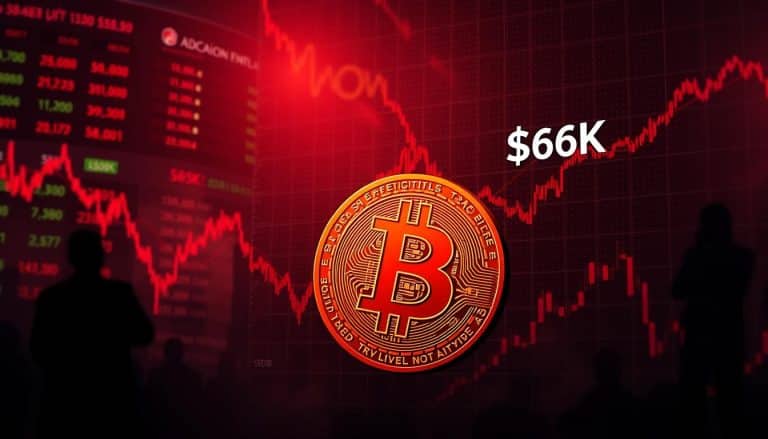Geopolitical Events Shaping Xrp’s Future
XRP is like a ship in the night, buffeted by the changing winds of geopolitics. From US-China trade wars to Brexit and beyond, geopolitical events can have significant implications on the future of XRP. In this article, we will explore how geopolitical events, such as economic policies within the European Union and global tax regulations, can shape the future of XRP. We will also examine how recent developments in US-China relations, including currency manipulation and 5G network conflicts, could influence its trajectory. With this analysis, we hope to gain insight into the potential impacts that geopolitical events may have on XRP in the years ahead.
Overview of XRP
XRP is a digital asset that facilitates global payments between financial institutions and provides an alternative to traditional banking methods. Due to the cryptocurrency’s decentralized nature, it has been subject to regulatory uncertainty and market volatility over the course of its existence. The increasing tension between the United States and China has further exacerbated these conditions, making it difficult for investors to predict XRP’s future prospects. This unstable geopolitical landscape has made forecasting the impact of XRP on global payments increasingly complex, as its usage could be contingent upon shifting government policies. As such, this dynamic environment presents both opportunities and risks for those looking to invest in XRP or use it as part of their payment infrastructure. Moving forward, understanding how developments in international relations can affect XRP will be key in determining its future success or failure.
Impact of US-China trade war
The escalating trade war between the United States and China has had a ripple effect across the cryptocurrency industry, with Ripple’s XRP token being no exception. Crypto regulation is an ever-evolving field that must adjust to the changing political landscape in order to protect investors. The US-China trade war has ramped up pressure on both sides to implement protective regulations that could potentially hinder free cross-border digital payments. This could be especially damaging for XRP, as its primary use case is facilitating global payments.
Ripple executives have been vocal in their support of free trade and open international markets, and have been pushing for governments to take a more measured approach towards regulating cryptocurrencies. With tensions likely to continue for the foreseeable future, XRP’s future will depend on how successfully it navigates this uncertain geopolitical climate. Consequently, careful consideration must be given when evaluating Ripple’s potential investment opportunities in light of these events. Transitioning into subsequent sections about ‘impact of Brexit’, it is clear that Ripple’s future prospects are subject to a wide range of geopolitical forces beyond simply the US-China trade war.
Impact of Brexit
As the United Kingdom’s withdrawal from the European Union continues to unfold, its direct impact on Ripple’s XRP token is becoming increasingly apparent. The effects of Brexit have had a two-pronged effect on XRP; in terms of liquidity and regulatory uncertainty. In particular, financial institutions have experienced difficulties when it comes to moving their funds into or out of the UK due to Brexit. This has created a certain degree of liquidity issues for XRP as well, as many exchanges and businesses are unable to move their funds out of the UK quickly and securely. Additionally, with Brexit still not completely finalized, there is an ongoing level of regulatory uncertainty which has led to some investors being more cautious when investing in XRP.
The lack of clarity regarding future economic policies of the European Union after Brexit has also been a major factor influencing how markets view Ripple’s XRP token. With no clear indication yet as to what direction this could take, investors remain uncertain about how XRP will be affected by future economic developments within Europe. As such, it remains difficult for investors to make informed decisions about their investments in Ripple’s XRP token until more information becomes available concerning prospects for the European economy post-Brexit. All these factors combined create an atmosphere of unease surrounding investment in Ripple’s XRP token that may continue until further clarification is provided regarding Britain’s withdrawal from the European Union.
Economic policies of the European Union
The European Union’s constantly evolving economic policies have had a direct impact on the trajectory of Ripple’s XRP token. Global trade agreements, financial markets, and international economic sanctions are some of the key factors that shape the EU’s economic policy:
-
Global Trade Agreements: The EU has concluded a number of free-trade agreements with countries around the world, which can affect both supply and demand for XRP tokens. These agreements have also enabled Ripple to expand its business operations to new markets by providing access to better payment infrastructure.
-
Financial Markets: The stability of financial markets in Europe is also an important factor in determining whether or not investors will invest in XRP tokens. As such, any changes made to regulations concerning stock exchanges, banks and other financial institutions can have an effect on how Ripple prices its cryptocurrency offerings.
-
International Economic Sanctions: Changes in global economic sanctions often affect the ability of companies like Ripple to operate abroad. When certain countries impose restrictions on foreign transactions or restrict access to their banking systems, this can create challenges for XRP users looking to carry out international payments quickly and securely.
The influence that each of these factors has on XRP’s price movements remains uncertain; however, it is clear that they all play a role in shaping its future performance. With this context in mind, we now turn our attention towards examining the potential impact of US-Iran tensions on Ripple’s future prospects.
Impact of US-Iran tensions
Tensions between the United States and Iran have created a ripple effect on the cryptocurrency market, symbolizing a financial storm that could potentially alter the trajectory of XRP. With an increase in sanctions placed on Iranian businesses by the US government, there is potential for new cryptocurrency regulations to be implemented in order to monitor cross-border transactions. This would have major implications for digital currency investment as it would limit its use as a vehicle for money laundering or illegal capital flight. In addition, it could change the way investors perceive cryptocurrencies like XRP and their potential profitability in the future. As such, these geopolitical events may have lasting effects on XRP’s future prospects.
The ongoing conflict between the United States and Russia has also contributed to instability within the global markets, particularly when it comes to cryptocurrencies like XRP. The US’ recent ban of Russian banks from accessing American debt markets has resulted in heightened economic volatility that is likely to impact digital currency investments going forward. Thus far, this tension between two major world powers has not had much direct influence on XRP’s market performance; however, this could change if further sanctions are levied against either country in response to current circumstances. Moving forward, any developments in US-Russia relations will need to be closely monitored in order to assess their impact on XRP’s future trajectory.
US-Russia relations
Recent developments in the relationship between the United States and Russia are likely to have a lasting impact on digital currency investments. The US-Russia geopolitical standoff has been at the forefront of international affairs for some time, with both sides imposing economic sanctions as part of a larger strategy. This could affect XRP’s investment prospects if the current sanctions regime remains in place or intensifies. In addition, this situation may also lead to further de-dollarization efforts by Russian authorities, which could see a shift away from US dollar investments toward digital currencies like XRP. As such, these recent events will undoubtedly shape XRP’s future prospects in both the short and long term. The next step is to examine how global economic slowdown may affect XRP’s future outlook.
Impact of global economic slowdown
Recent developments in the international arena have had a significant influence on the potential of digital currency investments, particularly with respect to their susceptibility to global economic slowdown. The impact of a global economic downturn is felt most strongly by investors, and this is especially true when it comes to digital currencies such as XRP. The geopolitical context plays a major role in influencing the health of economies around the world, and there are several key factors that can cause an economic slowdown; namely: China-India relations, OPEC supply levels, and digital currency speculation.
These three areas all have an impact on XRP’s future prospects as they directly shape investors’ expectations of return. For instance, if China and India were to engage in trade wars or escalate tensions between them then this could lead to increased volatility amongst major currencies which would be reflected in XRP’s market value. Similarly, if OPEC were to reduce their oil supply then this would create uncertainty for many markets across the globe which would likely have a knock-on effect on XRP’s performance. Finally, unrestrained speculation about cryptocurrencies can lead to overvaluation or undervaluation of assets such as XRP based on investor sentiment rather than objective evidence.
The above mentioned factors demonstrate how geopolitics can affect XRP’s future prospects by creating an environment of economic instability within which it must operate. As such, any changes in these geopolitical contexts should be monitored closely by those interested in investing in digital currencies so that they may make informed decisions regarding their portfolios. Transitioning into the next section without using ‘step’, it is clear that the US-China Digital Currency race will also play a defining role in XRP’s long-term outlook due its growing importance as both countries compete for dominance within the FinTech space.
Impact of US-China digital currency race
As competition between the US and China intensifies in the digital currency space, it is becoming increasingly evident that this race will have a profound impact on XRP’s long-term outlook, much like an old adage says ‘what goes around comes around’. Cryptocurrency trends are being heavily influenced by the actions of both countries as they seek to gain a competitive edge in the global economy. The US has been pushing for wider adoption of its own blockchain-based digital currencies such as Libra, while China is currently piloting its own central bank digital currency (CBDC). Both countries have taken different approaches to regulating cryptocurrencies, with the US taking an open approach while China has adopted a more restrictive stance. As a result, there are distinctly different monetary policies being implemented which could affect XRP’s future prospects.
Given the current geopolitical tensions between these two countries and their respective ambitions in terms of digital currencies, it can be said that XRP may face some headwinds in terms of its overall market performance. It is possible that any significant shifts in either country’s policy towards crypto could negatively or positively impact XRP. Furthermore, if either nation succeeds in creating an effective CBDC before the other does then this could significantly alter XRP’s position within the cryptocurrency markets due to increased competition from government-backed digital currencies. As such, it is wise for investors to stay abreast of developments related to this US-China digital currency race as it may shape XRP’s future prospects. With these factors in mind, understanding how this race impacts industry dynamics will be pivotal for those invested or considering investing into XRP.
Impact of US-China tech war
The escalating tech war between the US and China is having a significant impact on the digital currency space. Central bank digital currencies (CBDCs) are becoming the latest battleground in this conflict, as both countries attempt to gain a competitive advantage in their respective economic and geopolitical strategies. This has led to increased economic sanctions from both sides, which have had a direct effect on the value of XRP. For example, US-imposed sanctions on Chinese companies have caused significant drops in XRP prices due to decreased demand from those companies. Likewise, Chinese-imposed sanctions on American firms have resulted in similar downward trends for XRP prices. On top of this, the current uncertainty surrounding CBDCs has made it difficult for investors to know how best to allocate their funds within the cryptocurrency markets. As such, there is an increasing risk that further geopolitical events could cause further volatility within XRP’s future price fluctuations. Transitioning into the subsequent section about ‘impact of opec+ production cuts’, it is evident that global political events can have a tremendous influence over market forces like supply and demand which can affect cryptocurrencies like XRP significantly.
Impact of OPEC+ production cuts
Recent OPEC+ production cuts have had a direct influence on the cryptocurrency markets, impacting digital currencies like XRP significantly. The removal of a large portion of global oil supply has resulted in significant currency fluctuations and an increase in oil prices. This has caused a ripple effect throughout the crypto markets, with XRP being particularly affected by these changes.
On one hand, the surge in oil prices can be beneficial for XRP holders as it drives up demand for cryptocurrencies which are seen as safe-haven investments during times of economic instability. On the other hand, the currency fluctuations resulting from these events can lead to higher volatility and risk in the market which could potentially have a negative impact on XRP’s performance. Overall, OPEC+ production cuts have had both positive and negative effects on XRP’s future prospects.
Impact of US-China financial regulations
Strained US-China relations have created a volatile economic landscape that is having a direct effect on the cryptocurrency markets. In particular, banking sanctions imposed by the US government against China have caused Ripple (XRP) to become particularly volatile in recent months. These sanctions have created an uncertain environment for financial transactions between the two countries, which has had a ripple effect on digital currency trading businesses and exchanges.
The introduction of new regulations regarding digital currencies by both countries could also affect XRP’s future prospects. The Chinese government has already taken steps to limit access to digital currency exchanges in order to protect investors from fraud or other risks associated with these platforms. Meanwhile, the US Treasury Department has issued warnings about dealing with virtual currencies due to their use in illicit activities such as money laundering and terrorist financing. As these regulations are implemented, XRP may be adversely impacted if it is seen as more risky than other cryptocurrencies due to its perceived connections with China. This could lead to reduced liquidity and decreased demand for XRP as traders opt for alternative investment options.
Impact of global tax regulations
As countries around the world strive to protect their own tax revenues, cryptocurrency regulations are becoming increasingly complex and widespread. This has a direct effect on Ripple (XRP), as the digital asset is subject to various policies in different jurisdictions. Governments are seeking to tax crypto profits from trading, mining, and other activities in order to increase their revenue streams. Additionally, many countries have implemented regulations that require digital banking services such as crypto exchanges to comply with certain KYC/AML requirements when dealing with customers from foreign nations. As a result of these global tax regulations, XRP holders must be aware of the local rules before transacting or trading in any jurisdiction.
Furthermore, it is essential for XRP holders to understand how potential changes in currency values caused by deliberate manipulation of government-backed currencies might affect them. For example, if one country were to devalue its domestic currency relative to another’s, it could lead investors seeking higher returns towards XRP or other cryptocurrencies as hedging tools against further losses due to inflation or capital controls imposed by governments. Understanding these geopolitical events can help XRP holders make more informed decisions about where and when they should invest their funds.
Impact of US-China currency manipulation
Recent currency manipulation between the US and China has had a significant effect on global markets, including cryptocurrencies such as XRP. The US-China trade war has caused an upheaval in the global economy, with both countries engaging in tit-for-tat retaliatory tariffs and other economic sanctions. As a result of these actions, currency exchange rates have been highly volatile, with major currencies experiencing drastic changes in value. This volatility has had a direct impact on XRP’s market performance, as its price is directly linked to the changing values of foreign currencies. Additionally, tighter monetary policy from both countries has affected the liquidity of XRP across different markets, making it harder for some investors to access and trade this cryptocurrency. These geopolitical events have thus had a clear influence on the future of XRP and other digital assets. As negotiations regarding a potential US-China trade deal continue to progress, further developments may uncover new ways that currency manipulation could shape Ripple’s future prospects.
Impact of US-China trade deal
The recent US-China trade deal is expected to have a significant effect on global markets, including cryptocurrencies such as XRP. According to the latest figures, the agreement could add around $200 billion to the US economy over the next two years. This is largely due to a Geneva Agreement which is intended to ensure that neither country artificially manipulates its currency in order to gain an unfair advantage in international trade. It also includes provisions for China to open up some of its financial markets and allow greater foreign investment, which could potentially benefit companies like Ripple and other cryptocurrency startups doing business with Chinese customers. Additionally, monetary policy changes from both countries could create more demand for digital assets like XRP, as investors seek out stable stores of value. All of this suggests that the outcome of the US-China trade deal could have a positive impact on XRP’s future prospects.
Impact of US-China 5G network conflict
Recently, the US-China 5G network conflict has been a major factor in global economic and technological developments. The geopolitical implications of this ongoing conflict have had an impact on digital payments and monetary policy worldwide, particularly in the case of Ripple’s XRP cryptocurrency. In particular, there is potential for this conflict to significantly shape the future of XRP as it relates to increased usage by financial institutions and other entities.
The US-China 5G network dispute has already had an effect on Ripple’s ability to grow its customer base in China due to increasing regulations surrounding digital payment technology. As a result, Ripple has been unable to effectively compete with local Chinese competitors such as Alipay and WeChat Pay. Although Ripple still maintains a presence in China through partnerships with major banks and financial institutions, the US-China 5G network conflict could potentially limit the growth potential for its cryptocurrency even further depending on how far relations between the two countries deteriorate. Additionally, any restrictions or sanctions that are imposed as a result of this conflict may also have an effect on XRP’s use within international markets if they apply to digital payments or cryptocurrencies specifically. Overall, the current US-China 5G network conflict is likely to be one of many geopolitical events that will shape XRP’s future prospects in terms of global adoption and usage.





 Bitcoin
Bitcoin  Ethereum
Ethereum  Tether
Tether  XRP
XRP  Wrapped SOL
Wrapped SOL  USDC
USDC  Lido Staked Ether
Lido Staked Ether  TRON
TRON  Dogecoin
Dogecoin  Cardano
Cardano  Figure Heloc
Figure Heloc  Bitcoin Cash
Bitcoin Cash  Wrapped stETH
Wrapped stETH  WhiteBIT Coin
WhiteBIT Coin  Wrapped Bitcoin
Wrapped Bitcoin  Wrapped eETH
Wrapped eETH  USDS
USDS  Chainlink
Chainlink  Binance Bridged USDT (BNB Smart Chain)
Binance Bridged USDT (BNB Smart Chain)  LEO Token
LEO Token  WETH
WETH  Zcash
Zcash  Monero
Monero  Stellar
Stellar  Coinbase Wrapped BTC
Coinbase Wrapped BTC  Sui
Sui  Litecoin
Litecoin  Ethena USDe
Ethena USDe  Hyperliquid
Hyperliquid  Avalanche
Avalanche  Shiba Inu
Shiba Inu  Canton
Canton  Hedera
Hedera  World Liberty Financial
World Liberty Financial  sUSDS
sUSDS  Toncoin
Toncoin  USDT0
USDT0  Dai
Dai  Cronos
Cronos  Uniswap
Uniswap  PayPal USD
PayPal USD  Polkadot
Polkadot  Mantle
Mantle  Ethena Staked USDe
Ethena Staked USDe  USD1
USD1  Pepe
Pepe  Rain
Rain  MemeCore
MemeCore